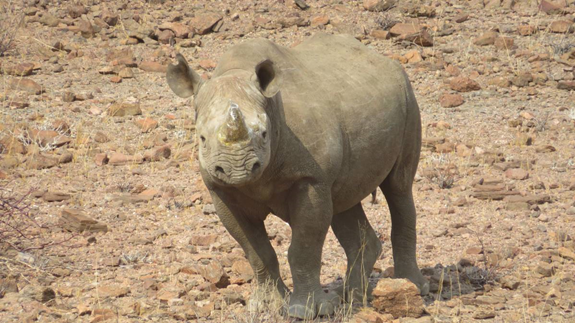Houston Zoo partners with IRDNC to protect black rhinos in Namibia
Houston Zoo has partnered with Integrated Rural Development and Nature Conservation (IRDNC) to protect critically endangered black rhinos in Namibia. It provides IRDNC’s Rhino Ranger program food during anti-poaching patrols, camping gear, state-of-the-art rhino monitoring cameras, another tech, and outfits Rangers with quality uniforms and strong hiking boots. According to the zoo, poaching is still among the main threats to rhinos, but thanks to IRDNC’s 17 Rhino Rangers, there have been no poaching incidents within their patrol area over the last three years.
Saving Black Rhinos in Namibia
Namibia is a country in southern Africa that hosts the world’s most prominent black rhino population. Unfortunately, these majestic animals have been hunted down by poachers, leaving their population on the brink of extinction. However, the Namibian government and conservation organizations have united to protect and preserve the black rhino population.
Creating Protected Areas
The government has designated protected areas where the black rhinos are safe from hunting. These areas are monitored closely, and illegal activities are dealt with swiftly. In addition, local communities are encouraged to participate in conservation efforts by creating community conservancies that work hand in hand with the government and conservation organizations.
Translocating Rhinos to Safer Areas
Another approach that has been effective in saving the black rhinos is translocating them to safer areas. In this process, poachers transport rhinos to protected areas with a lower risk of hunting. This strategy ensures the rhinos’ safety and helps increase their population in areas where their numbers have declined.
Conservation through Tourism
Tourism has played an integral role in the conservation efforts in Namibia. Through eco-tourism, wildlife enthusiasts from around the world visit the country to see the black rhinos and other endangered species in their natural habitats. These tourists contribute to the conservation of the animals by paying park fees, which fund conservation efforts.
Overall, the conservation efforts in Namibia have made significant strides in preserving the black rhino population. By creating protected areas, translocating them to safer areas, and promoting conservation through tourism, Namibia has shown a commitment to protecting these endangered species. While much work still needs to be done, Namibia’s efforts to save the black rhinos are a step in the right direction.


